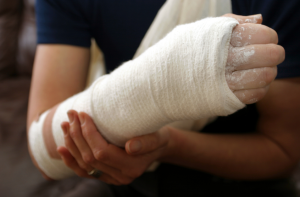 Being involved in an injury or a similar situation can be taxing for anyone involved. To add on to that stress, the possibility of taking the legal route can be a huge burden for someone to carry. But before embarking on the possibly lengthy and expensive procedure, you should be fully prepared by making sure that you have all the necessary facts and information before filing the motion.
Being involved in an injury or a similar situation can be taxing for anyone involved. To add on to that stress, the possibility of taking the legal route can be a huge burden for someone to carry. But before embarking on the possibly lengthy and expensive procedure, you should be fully prepared by making sure that you have all the necessary facts and information before filing the motion.
One of the first things to consider is whether or not you actually have a case. Was this personal injury due to someone else’s negligence or through your own? Do you actually have a true case? Before you file an actual case, you want to make sure you meet some basic requirements. Please note that meeting these requirements don’t necessarily mean that one will have a successful case. These suggestions just ensure that you will have a justifiable viable case and will reduce the risk of said case being dismissed.
One of the first things you need to look for is the presence of a duty. In every situation and injury case, there is a duty from the proposed defendant to the claimant. For example, if it snows, it is the property owner’s duty to ensure that the their property is safe and free from ice. In this instance, you are preventing any possible injuries to a claimant.
Once the presence of a duty is established, a breach of said duty needs to be established. Piggybacking off of the snow example, if the snow and ice is not removed from the property, the owner of said property will be at fault and liable for a suit. In addition to the breach of a duty, there needs to be a physical injury that takes place in order for a suit to be justifiable. The claimant needs to sustain an injury that can be either physical, emotional, or financial and there needs to be evidence and proof of said injury.
Finally, once you have established the aforementioned requirements, the claimant needs to prove causation between the breach of duty and the injury. In other words, the claimant must prove that the defendant’s actions were directly culpable for the claimant’s injuries. Going back to the snow example, the claimant has to prove that the property owner was negligent in removing the snow and ice, therefore causing the injury.
Before filing a personal injury claim, one needs to ensure that they have all of the above requirements in place. Failure to check these can result in a dismissal of a case. On the other hand, a defendant needs to make sure that all laws are abided by in order to prevent a personal injury case. If you are a property owner, be sure to check all regulations and laws in order to prevent future claims.
